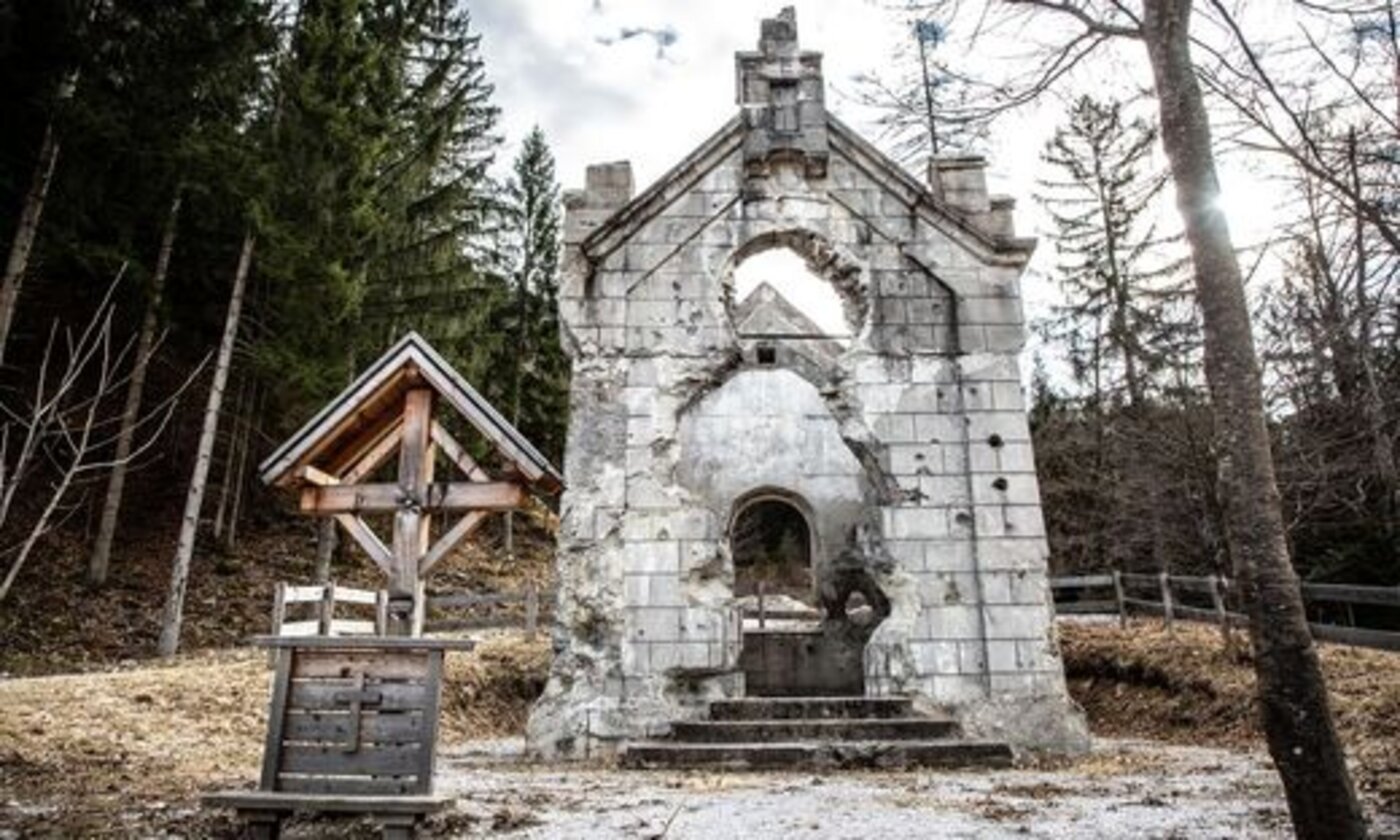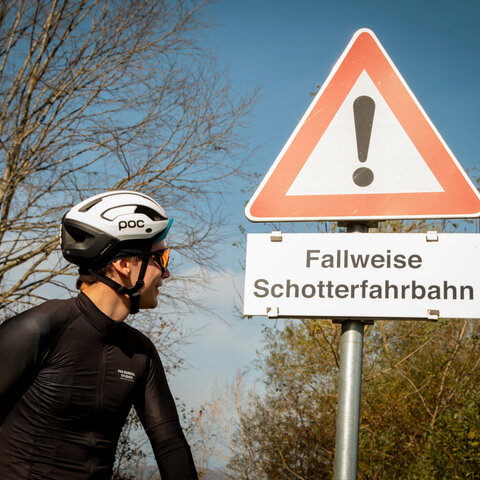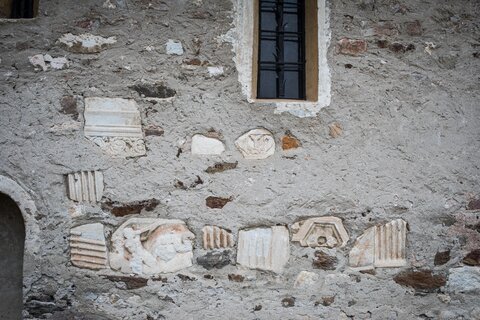Even the community of fixie lovers has realized in the meantime that it can be even hipper, but above all more multifunctional. With the advent of gravel bikes, completely new facets of cycling have opened up. While the driving speed reaches approximately that of a racing bicycle, most different undergrounds become now passable. The style-conscious gravel bikers can now be found in Carinthia in almost any terrain. By expanding the range of possibilities and activities, the gravel sport bikes at Lake Wörthersee will take you to any number of places with exciting stories and photo spots. Constant companions are dreamlike views and magnificent landscapes.
We promise you that your tours will not only be remembered for their scenic impressions. Discover a variety of Lost Places that our book authors and absolute insiders Georg Lux and Helmut Weichselbraun have researched and compiled for you. Not interested in all the Lost Places stuff? No problem, the Gravelbike tours were created together with our "Gravel ambassador" and Neo-Wörtherseer Johnny Hoogerland. If you take a look at his personal Strava heatmap, you'll see that there are hardly any roads and paths that he hasn't ridden yet. No joke!
With its location in the central area of Carinthia, Lake Wörthersee offers the perfect "base camp" for all cycling enthusiasts. Short selective routes or extended day tours are equally on offer. With the Gravelbike additionally a lot of new possibilities open up. To the northwest of Lake Wörthersee, the Ossiacher Tauern stretch all the way to Lake Ossiach, and to the northeast, the Moosburger Hügelland. Both elevations are true treasure troves when it comes to elevation-rich gravel routes. South of Lake Wörthersee, the Sattnitz awaits as a hilly intermediate stage before you reach the ultimate gravel speed route, the Drau cycle path.
In general, the gravel destination of Lake Wörthersee can be classified as technically quite easy terrain. Breakneck trails with difficult surfaces will not surprise you on our tours. Rather, you'll get your money's worth on the classic gravel stretches, while you pedal off the very selective terrain and the constantly changing landscapes. The term "enjoyment" is notoriously elastic. However, the feedback from the community includes it quite often. By the way, the routes are perfect for all e-gravel bikers.
While road cyclists and pleasure cyclists would like to see an asphalt surface along the entire Drau cycle path, this only costs gravel bikers a smile. The predominantly flat route is, in cycling terms, the lifeline par excellence. The largely graveled roadway connects Upper and Lower Carinthia. On our Tour suggestions you will immediately notice that the Drau cycle path (as well as the Gail cycle path) is mostly a component for connecting to other routes. In the area of Faaker See you should definitely cycle through the Faaker Moor and experience fantastic views in the area around Kopein. Finally, the southern border of the province is formed by the rugged Karawanken. Here, too, we have put together some routes for you.
For those who are not afraid of longer tours, we recommend "border tours" to Italy and Slovenia as well as in the direction of the Nockberge mountains.
When compiling the tours, we have tried to find a pleasant mix of paved surfaces, gravel and unpaved paths. Since not all paths and forest roads in Carinthia are freely passable, we will guide you along legal routes on our tours. Please respect this also in the context of FairPlay with landowners, agriculture and hunters.
Fantastic landscapes, cultural diversity, multifaceted cuisine and truly limitless leisure opportunities. The border triangle of Austria - Italy - Slovenia offers locals and guests alike a living space that leaves little to be desired. The Mediterranean influence sweetens the region with a portion of lightness and a very special attitude towards life.
Geopolitical importance of the region
Historically, however, the region from the main ridge of the Alps to the Adriatic Sea looks back on a time marked in part by much suffering. From time immemorial, the border triangle has occupied a geopolitically extremely important - and therefore often contested - position. Excavations and finds already prove prehistoric settlements, for example at the Kathreinkogel or in the Keutschacher See. As early as the Hallstatt period, an important north-south trade route led through the region. Numerous settlements in Carinthia and Friuli profited from the lively trade of the Celts and Romans with Norse iron and Mediterranean foodstuffs. Carinthia's importance in the Middle Ages is still evidenced by the many castles or their ruins, such as Reifnitz Castle on the southern shore and Leonstein Castle on the northern shore of Lake Wörthersee. Threat scenarios of the past, for example by marauding Turkish armies or later by Napoleon's troops, gave rise to legends, some of which are still told today. Carinthia had a lot to defend: Until the discovery of America, Carinthia was considered the richest mining region in the world known at that time - gold, iron and lead were mined. The disintegration of the Danube Monarchy after World War I brought Carinthia to the border, the exact course of which was to be wrangled over for several years afterwards. It was, however, cemented in the truest sense of the word during the Cold War in the second half of the 20th century. At that time, hundreds of bunkers were built in the border region between Austria, Italy and Slovenia.
Silent witnesses of this eventful past are above-ground and underground Lost Places from all eras - sometimes well hidden, sometimes obvious, but always with lots of history and stories at every turn. Our tours take you to such places, some of which are quite eerie (our Lost Places experts have also written an exciting book about Dark Places).
Industry, Traffic & Co
Popular lost places in the border triangle also include a great many abandoned mines and ruins all around. Lead mining in particular was of great importance in the region. Some of the tunnels are still open to the public today, but only as show mines. Off the beaten track, it is forbidden to enter underground facilities! However, snapshots inside are possible in many cases. Do not forget your flashlight! Since the Hallstatt period, Carinthia has been located on one of the most important north-south traffic axes in Europe. The remains of many so-called Roman roads bear witness to this. An ancient or medieval track road is also part of one of our routes. The dilapidated train stations in the Canal Valley or the "Chapel of Forgotten Souls" next to the Karawanken railway tunnel near Rosenbach date from later times.
Whimsical & "Dark
Each era naturally brings its peculiarities, rituals and "underdogs". They shape many tales and legends, which often revolve around eerie places. We have also discovered Lost Places for all "Dark Tourism" fans and described them as stopovers. Our specialists have even dedicated a book of its own to this genre with "Forgotten and Repressed - Dark Places in the Alps-Adriatic Region".































